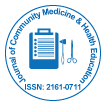å½ç¤¾ã°ã«ã¼ã㯠3,000 以ä¸ã®ä¸ççãªã«ã³ãã¡ã¬ã³ã¹ã·ãªã¼ãº ç±³å½ãã¨ã¼ããããä¸çä¸ã§æ¯å¹´ã¤ãã³ããéå¬ããã¾ãã 1,000 ã®ããç§å¦çãªå¦ä¼ããã®æ¯æ´ãåããã¢ã¸ã¢ ããã³ 700 以ä¸ã® ãªã¼ãã³ ã¢ã¯ã»ã¹ãçºè¡ã¸ã£ã¼ãã«ã«ã¯ 50,000 人以ä¸ã®èå人ãæ²è¼ããã¦ãããç§å¦è ãç·¨éå§å¡ã¨ãã¦åé«ã
ããªã¼ãã³ã¢ã¯ã»ã¹ã¸ã£ã¼ãã«ã¯ããå¤ãã®èªè
ã¨å¼ç¨ãç²å¾
700 ã¸ã£ã¼ã㫠㨠15,000,000 人ã®èªè
åã¸ã£ã¼ãã«ã¯ 25,000 人以ä¸ã®èªè
ãç²å¾
ã¤ã³ããã¯ã¹ä»ã
- ç´¢å¼ã³ãã«ãã¯ã¹
- Google ã¹ã«ã©ã¼
- ã·ã§ã«ãã»ãããª
- Genamics JournalSeek
- ã»ã¼ããã£ã©ã¤ãä»ã
- ã¬ãã·ã¼ã¯
- ãã ãã¼ã大å¦
- ã¨ãã¹ã³ ã¢ãªã¾ãå·
- OCLC-WorldCat
- ãããã³
- ã¸ã¥ãã¼ãå»å¦æè²ç 究財å£
- ã¦ã¼ããã
- ICMJE
å½¹ç«ã¤ãªã³ã¯
ãªã¼ãã³ã¢ã¯ã»ã¹ã¸ã£ã¼ãã«
ãã®ãã¼ã¸ãã·ã§ã¢ãã
æ½è±¡çãª
How did Japanese ?Community Based Integrated Care System? Function During the COVID-19 Pandemic?
Yayoi Saito
On January 16, 2020, the first case of the novel coronavirus infection (COVID-19) was identified in Japan. Subsequently, the
number of infection cases increased, leading to the first declaration of the state of emergency in Tokyo, Kanagawa, Saitama,
Chiba, Osaka, Hyogo, and Fukuoka on April 7, 2020. On April 16, 2020, the declaration was extended nationwide. The state of
emergency was lifted on May 14; however, this did not apply to metropolitan areas. On May 25, the state of emergency was lifted
across Japan, after one and a half months of its initial imposition.

 English
English  Spanish
Spanish  Chinese
Chinese  Russian
Russian  German
German  French
French  Portuguese
Portuguese  Hindi
Hindi